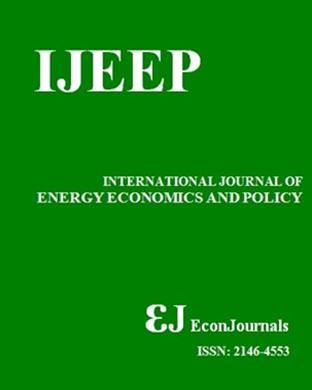Analysis of the Economic and Environmental Factors Affecting CO2 Emissions in Egypt: A Proposed Dynamic Econometric Model
DOI:
https://doi.org/10.32479/ijeep.19222Keywords:
ARDL Model, Climate Change, Economic Activities, Land Under Cereal ProductionAbstract
Developing nations have environmental issues due to their dependence on non-renewable energy sources for economic development. This paper analyzed the interplay between CO₂ emissions and five economic variables, namely land under cereal production (LAND), manufacturing (MANUF), trade openness (TRADE), GDP per capita (GDPPC), and foreign direct investment (FDI) in Egypt from 1990 to 2022. The autoregressive distributed lag (ARDL) model is used to examine both short-term and long-term relationships. The results indicated that the ARDL (1,1,2,2,0, 0) is the optimal model, which has the lowest Akaike information criterion (AIC) value. The variables of MANUF and GDPPC negatively affected CO₂ emissions, but the TRADE and LAND variables had positive long-term effects. The lagged periods of TRADE and LAND variables have significantly affected CO₂ levels. The results of the error correction model indicate that the speed of return to long-run equilibrium after a short-run deviation occurs within about 4.5 years based on the value of the error correction term.Downloads
Downloads
Published
2025-06-25
How to Cite
Ebrahim, E. E. M., Abonazel, M. R., Ahmed, A. E. A., Abdel-Rahman, S., & Albeltagy, W. A. A. (2025). Analysis of the Economic and Environmental Factors Affecting CO2 Emissions in Egypt: A Proposed Dynamic Econometric Model. International Journal of Energy Economics and Policy, 15(4), 152–165. https://doi.org/10.32479/ijeep.19222
Issue
Section
Articles




